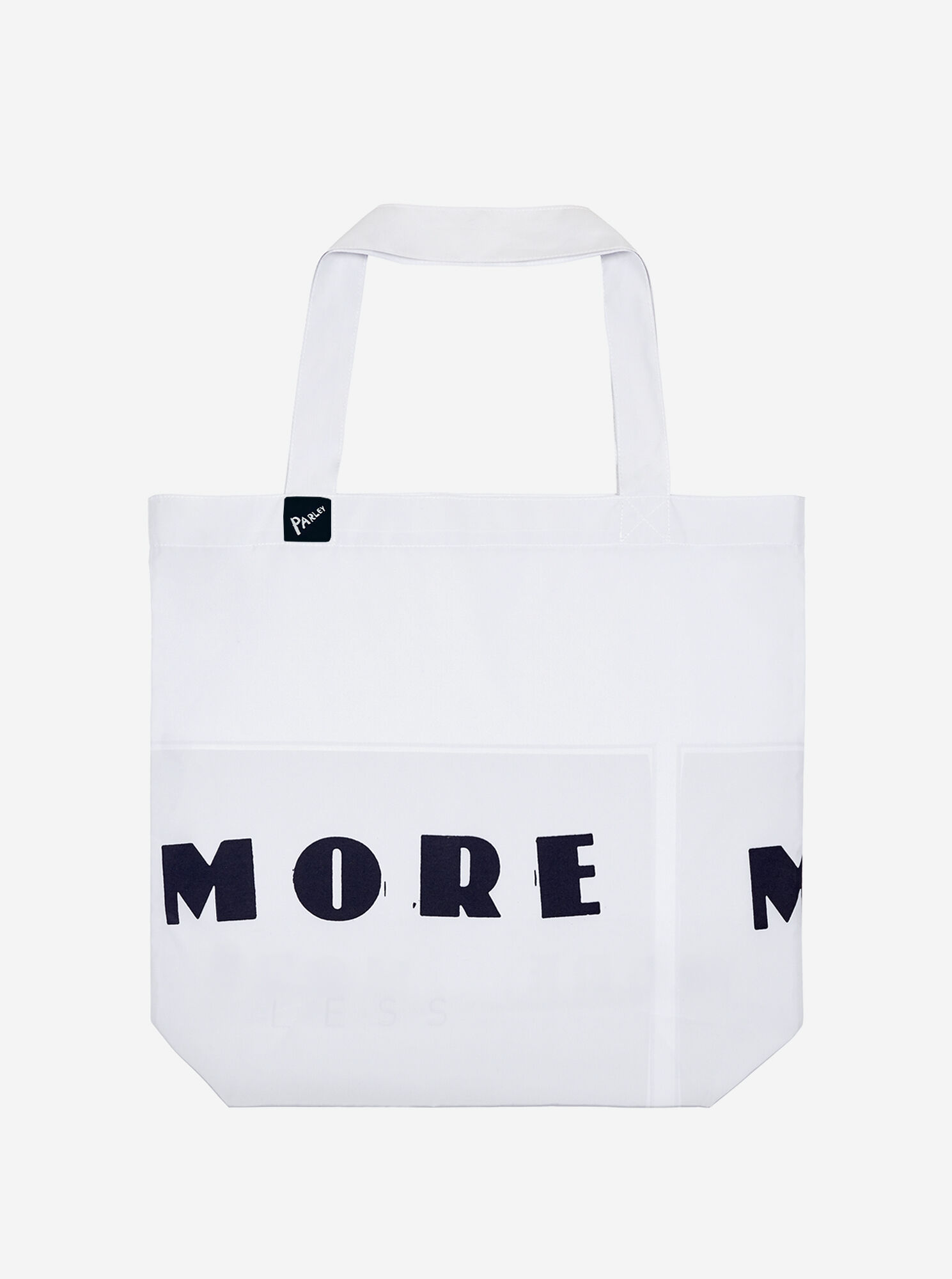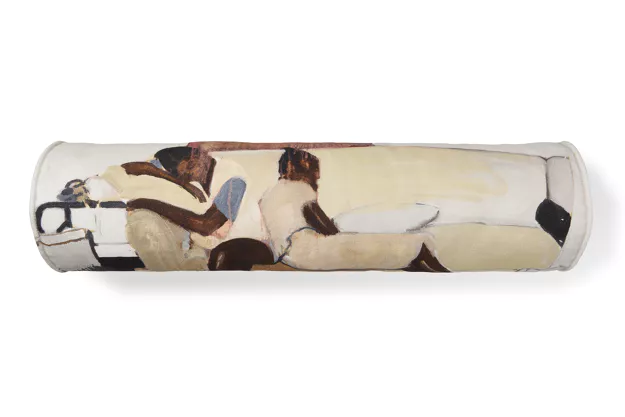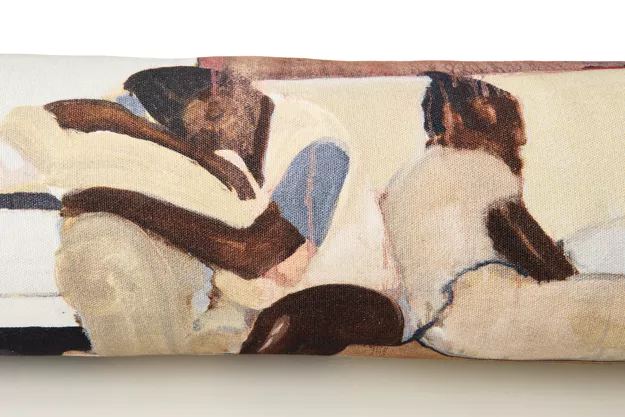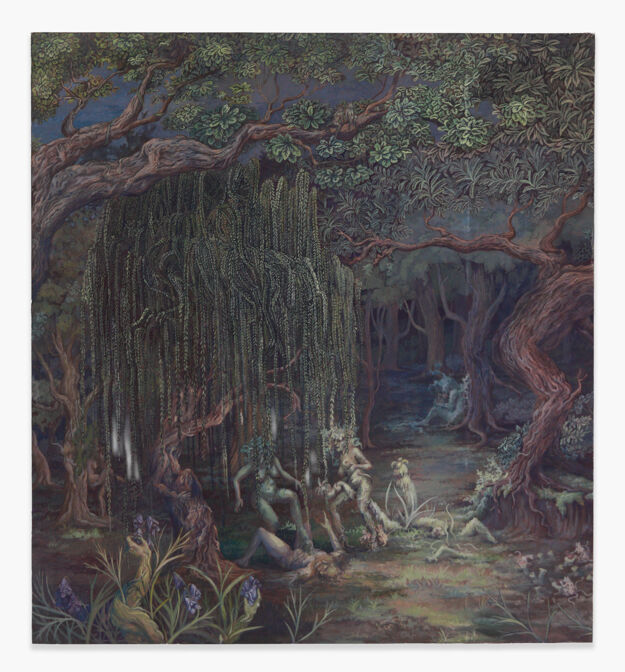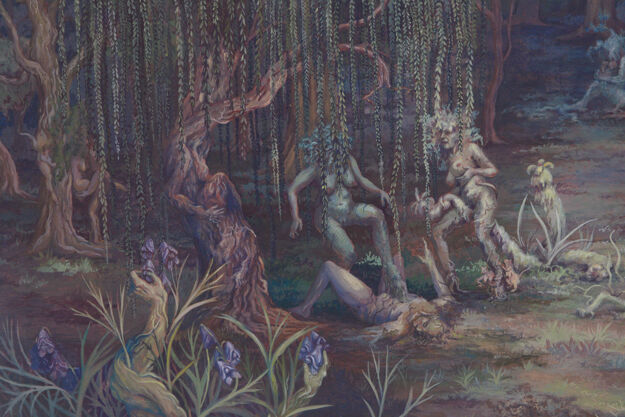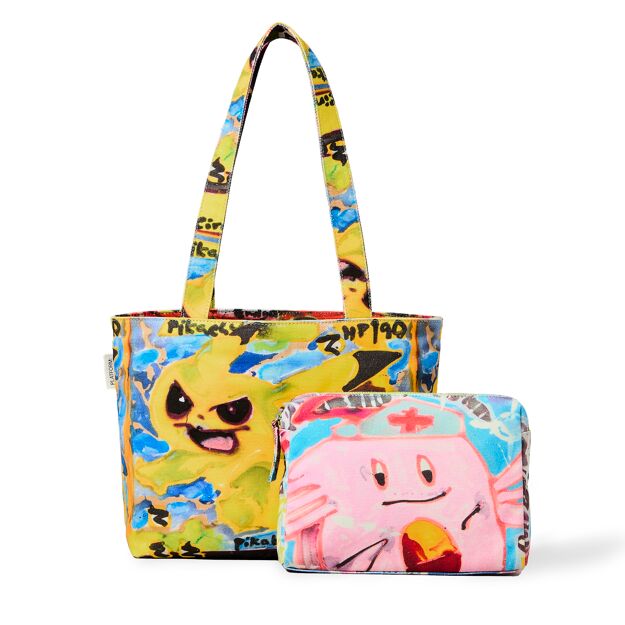About the artwork:
This limited-edition tote bag features artwork by Rosemarie Trockel and is created with Parley Ocean Plastic®, a range of premium materials made from upcycled plastic waste intercepted from coastal communities and marine environments. Each bag is created from ~5 intercepted plastic bottles and helps fund the removal of another 20 pounds of marine plastic debris.
Each limited-edition Parley Ocean Bag supports the movement to protect the oceans and end marine plastic pollution. Your purchase supports Parley for the Oceans initiatives around the world including: beach cleanups and plastic interception, ocean education and communication, and material science and eco-innovation.
Parley for the Oceans is the global environmental organization and network where creators, thinkers and leaders come together to raise awareness for the beauty and fragility of the oceans and collaborate on projects that can end their destruction. Working across the creative communities, brands, governments and environmental groups, Parley takes action to protect the oceans, Earth’s largest and most vital ecosystem, with an approach led by creativity, collaboration and eco-innovation.
About the artist:
Rosemarie Trockel was born in Schwerte, Germany in 1952. She studied in the Werkkunstschule in Cologne until 1978. Trockel’s oeuvre is diverse in themes and mediums, which include works on paper, ‘knitted paintings’ and sculptures. Though it is difficult to associate a particular style with her work, several concurrent themes can be identified, such as the female's role in society, trademarks and symbols as social signifiers and decorations and finally, her fascination with ethnographic and scientific studies, often expressed through her sculptures. Trockel has become best known for her machine-generated ‘knitted paintings' made of knitted woolen material placed on a stretcher. These works challenge classic notions of painting and general art-making while simultaneously commenting on feminine roles in society. Trockel references popular culture through her inclusion of logos or symbols, and sometimes text, as yet another way to comment on the commodification of art and on the subjectivity of language and visual representation.
